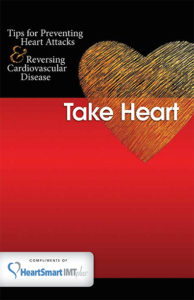A study was published in the April 2016 edition of the American Journal of Cardiology based on analysis of the HeartSmart database and the PowerPoint summary of the results. We thought you’d find these results of particular interest.
You may also purchase the full study: Carotid Plaque Characterization, Stenosis, and Intima-Media Thickness According to Age and Gender in a Large Registry Cohort
Also included at right is a link to our Clinical Overview (updated 8/16). This is a good document for detailing the benefits of the process.
In 2013 a study was published by Amy L Doneen and Bradley F. Bale:
Carotid Intima-Media Thickness Testing as an Asymptomatic Cardiovascular Disease Identifier and Method for Making Therapeutic Decisions
A gift from HeartSmartIMTplus – Take Heart – a guide to preventing heart attacks and reversing cardiovascular disease.
There’s an old joke that goes, “I saw my doctor the other day. He said the only thing on my body that wasn’t soft were my arteries.”
old joke that goes, “I saw my doctor the other day. He said the only thing on my body that wasn’t soft were my arteries.”
Unfortunately, this is often close to the truth! Jim was 41 years old and well on his way to a heart attack. He had beginning stages of heart disease and didn’t know it. More importantly, he was deceiving himself about his risk because he believed he was making all of the right lifestyle choices with diet and exercise. He was wrong!
Many people believe that heart disease is an inevitable part of aging, which is true to a certain extent. We all develop the buildup of fatty deposits and cellular waste in our cardiovascular systems as we age.
When this buildup becomes excessive, it can lead to a heart attack or stroke.
What many people don’t know is that heart disease is not only preventable— it is reversible.
